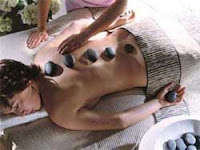Pain Pract. 2009 May-Jun; 9(3): 167-72Heavner JE, Bosscher HA, Wachtel MSBACKGROUND: We investigated if correlations exist between medical history, tissue abnormalities, and cell types retrieved from the epidural space of patients with chronic low back pain (LBP) and chronic radicular pain (RP). METHODS: Approval was obtained from the Institutional Review Board for the Protection of Human Subjects to study 191 patients undergoing epiduroscopy. Visual inspection was performed and abnormal areas were identified. A specimen obtained from the area using a cytology brush was processed by the Thin Prep technique. Patients were divided into four groups based on the presence or absence and intensity of LBP and RP. The gender and age of the patients were recorded, as was any history of prior back surgery. Areas of tissue abnormalities were rated according to changes in vascularity and amount of fat, fibrosis, and inflammation. Stenosis was assessed from magnetic resonance imaging or computerized tomography scan images. Cytologic assessments included notations of the presence or absence of erythrocytes, leukocytes, cell groups, lipocytes, spindled cells, and large round cells. RESULTS: There was a significant difference in the number of patients from whom big round cells were obtained who had a high degree of LBP compared with the number of patients who had a high degree of both LBP and RP. CONCLUSIONS: The findings provide a foundation for future studies of cells obtained from similar patients with the goal of furthering the understanding of the pathogenesis of LBP/RP.



